This is one of those years where you’re writing your end of year summary every day. It’s a year which inundated all of us with so much music, and from so many angles and genres, that it almost begged to constantly be analyzed, made sense of, and conceptualized. I’ve written about a dozen of these intros now, thinking about what I want to say, how to say it in not too many words (a pointless effort, I know), and how to even encapsulate what 2019 was in words. Naturally, the world outside of music also made things harder for me; keeping these introductions (this is my sixth one as the blog’s editor in chief) to “just” the music is an absurd proposition. Music doesn’t exist in a vacuum and, even if it did, our minds aren’t good with partitions and things bleed over, subjects, terms, and processes melding together into this thing we call “memory.”
So, as I often do when faced with daunting concepts and arduous tasks, I’d like to make things personal and talk about two years: 2014 and 2019. The former was my first year with the blog. I started it off as a writer, then moved on to be an editor, and then, finally, at the dog-end of the year, editor in chief. It was also one of the hardest years of my life and I’ve written plenty about that on the blog before. I had depression, not the brooding sort where you gaze over mountains misted over with fog in some German landscape, but the kind where you don’t shower, do the dishes, or get out of bed that often. The blog came to me in my year of misery and, beyond the work it gave me and the community it let me access, it also made me think about music really hard for the first time in my life. This is not to say that I was oblivious to music; even before the blog, I would listen to several new albums a month and I had a taste I called my own and was distinct from that of others.
But 2014 was the year in which I started forming a vocabulary to describe the music I love (and hate) and why I loved it. It was the year when I first lifted my head from the specific genres that I had gotten familiar with up until that point (mainly progressive and heavy metal) and started to think about not only new genres but the very way in which I was consuming and discovering new music. In that sense, my depression was a boon. I had all the time in the world to isolate myself in my apartment and listen not only to obscure or popular things but think about why I was listening to this thing or the other. It was truly a rush; suddenly, a whole plain of signals, performances, aesthetics, and ideas about what music was, how we think about it, how we talk about it, how we write about it, all of these things opened up to me. I felt like there was finally a Great Project I could throw myself into, namely “catching up” to all of the people who started to surround me online in terms of how I conceptualized music and why we listen to it.
One of the first things that came to me, something I would fully articulate only in 2015, was “The Golden Age of Metal.” I wrote a deep dive about it, describing all the ways in which we were living in an era of untold fecundity, productivity, and sheer quality for metal (and its brethren genres). Of course, this was all gut: I didn’t have hard data to back up my claim but rather a nebulous sort of feeling of being overwhelmed by how many amazing albums were being released. But it was more than that; it wasn’t just about the numbers, it was about variety and how every single subgenre I looked into was filled with this bounty. This was probably colored (extensively, if I’m being honest) by my own inexperience and that rush you get that usually characterizes the youth or the new to a certain field. It’s like being drunk: all the colors are brighter, the world faintly swims, your heart is fit to burst with emotions, and all music sounds like an angelic choir.
Which is not to say that I was wrong. I think it’s fairly obvious to everyone that we now live in the Golden Age of Metal. Now, as we stand in 2019, with not only this very quality, very insane year behind us, but also years like 2016, it’s obvious that what’s happening all around us is nothing short of marvelous. But now, my perspective is very different. First of all, my personal life is much better; I’m married to a wonderful woman, my career is going well, the blog is successful, and I’m creating the kind of work I want to be creating. But more than that, this will be my sixth year with the blog; I’ve fallen in love with numerous new genres, fallen out of love with others, and discovered many more. The feeling is no longer of being drunk, no longer of my world reeling with every week as I stumble from one motherlode of amazing music to another. I can veritably feel the horizon expanding around me as I understand not only how much music is out there but how many ways there are to consume, think, and conceptualize this music.
But here’s the thing: it still feels just as good exactly because there are so many ways to approach music. In fact, that’s one of the main reasons that music (and art in general, but perhaps music more than any other mediums) has infinite paths to it. Or at least, so it seems to me; I hear of people becoming jaded with music and I shake my head in confusion. There’s just so many ways to feel, think, and experience music; so many moods, themes, ideas, and vibes that music can relay; so many places and stories it can explore; and, most importantly of all, so many avenues, perspectives, and dispositions we ourselves can approach it from. When you put music’s infinite forms and our expansive internal landscapes together you get a massively complex, intricate, and, above all, fascinating matrix of feelings, points of view, meanings, and styles that seems like an endless garden to play around in. That’s how I feel at the end of 2019; secure in the ways which I have gathered to myself since starting to write for the blog yet at the same time hotly anticipating the many curveballs and surprises still in store for me.
OK. That’s maybe enough for an intro, don’t you think? As time goes by, I weirdly find myself both resenting and celebrating the idea of end of year lists. On the one hand, they seem so crass, such a limited vessel to cram something so majestic as music into. And yet, music almost seems to cry out for us to catalog it, to make sense of it, to delimit it, to cram inside our brains and our experiences and consume it (“It’s all part and parcel, the whole genie gig. Phenomenal cosmic powers! Itty bitty living space!”). And so, with the perspective of six years behind me, I let it. With the feeling of the distance walked from 2013/14 to 2019, with the countless releases, posts, words, tracks, solos, notes, melodies, harmonies, and all the rest of it, with the inebriation that comes with music, with the soberness of experience, with the horizon constantly expanding around me, I give you Heavy Blog’s Album of the Year list.
It was a truly marvelous year; let’s take a look together at some of its greater miracles.
…
50. Ceremony of Silence – Oútis
49. No One Knows What the Dead Think – No One Knows What the Dead Think
48. Xoth – Interdimensional Invocations
47. Conjurer & Pijn – Curse These Metal Hands
46. Cattle Decapitation – Death Atlas
45. Mizmor – Cairn
44. Exulansis – Sequestered Sympathy
43. Hath – Of Rot and Ruin
42. Iapetus – The Body Cosmic
41. LINGUA IGNOTA – CALIGULA
40. Leprous – Pitfalls
39. Wrvth – No Rising Sun
38. Numenorean – Adore
37. Saor – Forgotten Paths
36. Opeth – In Cauda Venenum
35. Torche – Admission
34. Immortal Bird – Thrive on Neglect
33. Pelican – Nighttime Stories
32. Employed to Serve – Eternal Forward Motion
31. Tomb Mold – Planetary Clairvoyance
30. Sturgill Simpson – Sound and Fury
29. Serpent Column – Mirror In Darkness
28. Old Solar – SEE
27. Periphery – Periphery IV: HAIL STAN
26. Astronoid – Astronoid
25. Vitriol – To Bathe from the Throat of Cowardice
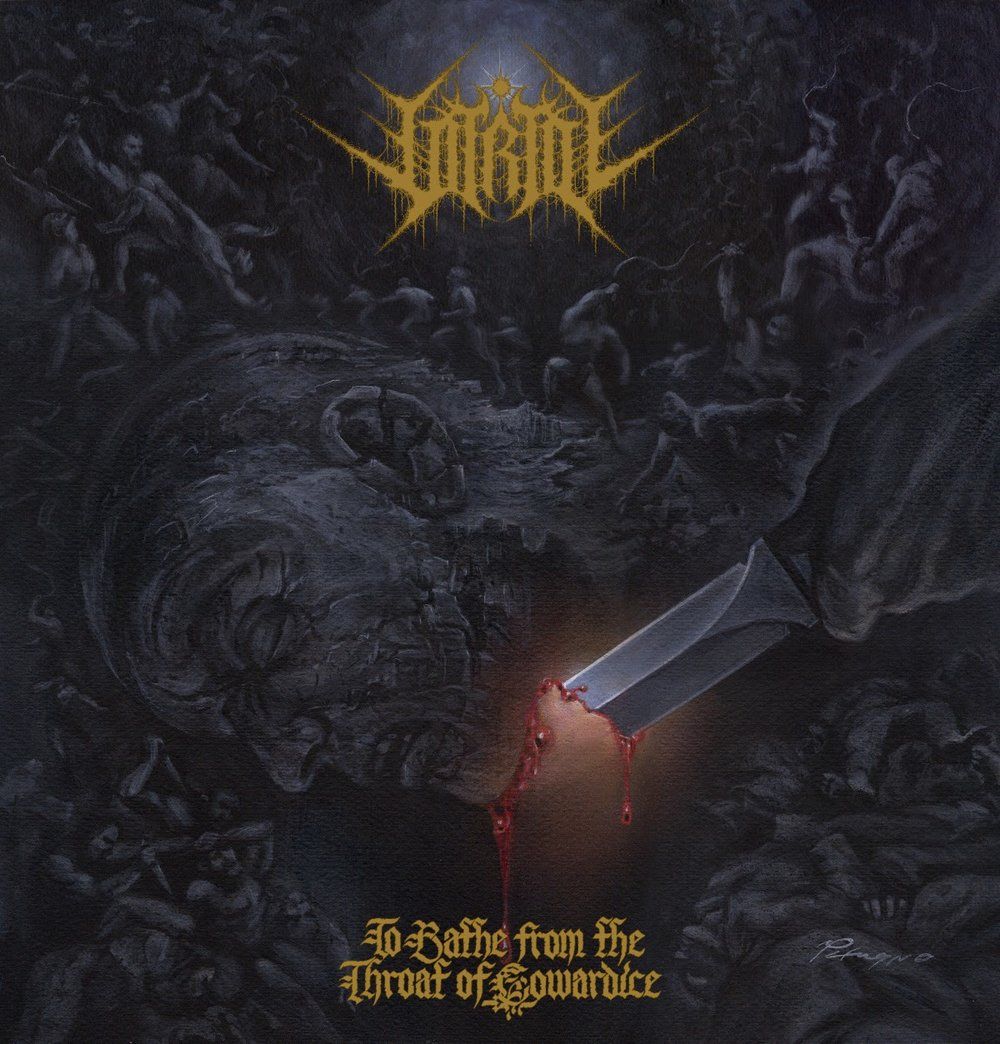
What violence deifiers Vitriol have brought to the table here is a true death metal balancing act. It has a guttural immediacy as well as depth, and the band tap into the “habitable zone” of production styles with a deft hand – not too sterile, but not too murky either. The best thing yet is that To Bathe is the band’s debut. Yes you heard that right: their debut.
The mix is simply suffocating, allowing about as much space to breathe as an Egyptian heatwave. The sheer density of the tracks is unlike anything else I have heard this year, with each instrument coming together as almost one solid mass, like the musical equivalent of being ground into dust by a Super Mario Bros. “THWOMP.” And yet, if you decide to listen more purposefully and intently, another layer of labyrinthine guitar wizardry—à la Archspire—reveals itself. It’s like a brick shithouse filled with seething wasps nests. I haven’t even mentioned Kyle Rasmussen’s eviscerating solos on tracks like “The Parting of a Neck” and “Hive Lungs,” where strings sound as if they’re being bent into the stratosphere. Put simply: Rasmussen’s solos hurt.
There aren’t really many more brvtal, OTT metaphors I can ascribe to Vitriol, the simple fact is this – it’s death metal. It’s fast, unforgiving, unrelenting and overwhelming. Ok I lied slightly, I have one more metaphor to end this piece on: this album is the neutron star of albums. Take from that what you will…
Read More: Review | Death’s Door | Editors’ Picks
-Joe Astill
24. Venom Prison – Samsara
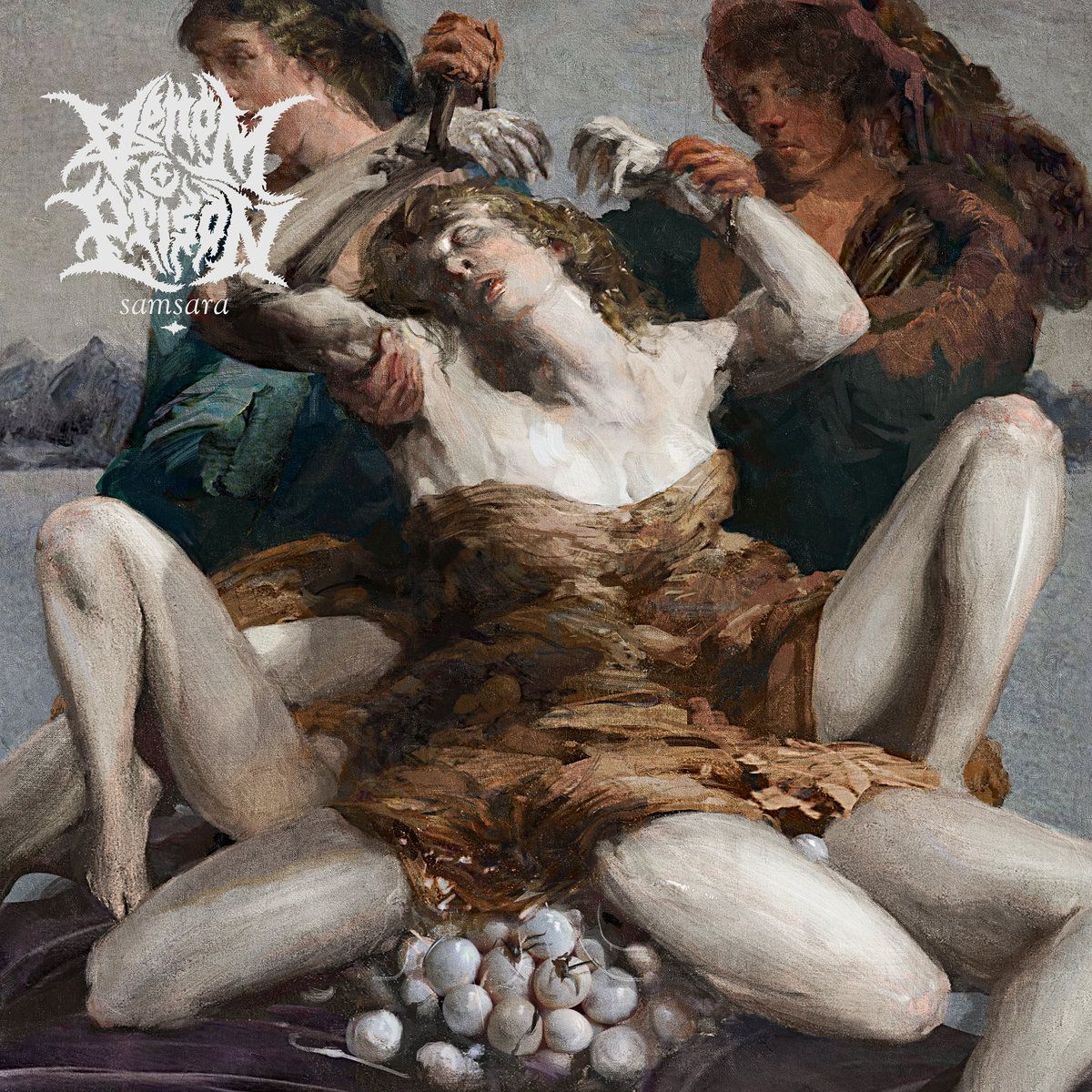
Damn. There’s a fair amount of sheer death metal brutality on our list this year, and it makes me so happy. Venom Prison is a chief offender in this regard, churning out some of the meanest, leanest, nastiest riffs in the game. Their sophomore full-length Samsara is an absolute monster of a release, and without question one of the most focused and compelling mixtures of death metal and hardcore I’ve heard in a significant amount of time. But what separates this record from the herd of fantastic releases in the subgenre over the past few years is the maturity of the songwriting, which is lights-out fantastic throughout. On nearly every front, Samsara excels.
Opener “Matriphagy” is as clear and concise a display of the band’s talents as you’ll find. Larissa Stupar’s vocal delivery is absolutely vicious, flexing between primordial screams and guttural howls that are utterly malicious. Guitarist Ash Gray is a juggernaut as well, unleashing riff after sick riff with all the fire and brimstone of a demented harbinger of the apocalypse. Everything about Samsara is a step above their already great debut Animus, but the core tenets of their sound remain intact. “Uterine Industrialisation” is a fundamental beast of a track that showcases the band’s ability to retain the elements of their sound and philosophy that made them special in the first place, all while cranking the intensity factor to 11. Balancing the heaviness of breakdown-heavy deathcore with the raw, jagged intensity of Skinless, there’s little to complain about here. It’s without question one of the absolute highlights of the year, and a record that I will be returning to frequently in the years to come.
Read More: Review | Death’s Door | Editors’ Picks
–Jonathan Adams
23. Ithaca – The Language of Injury
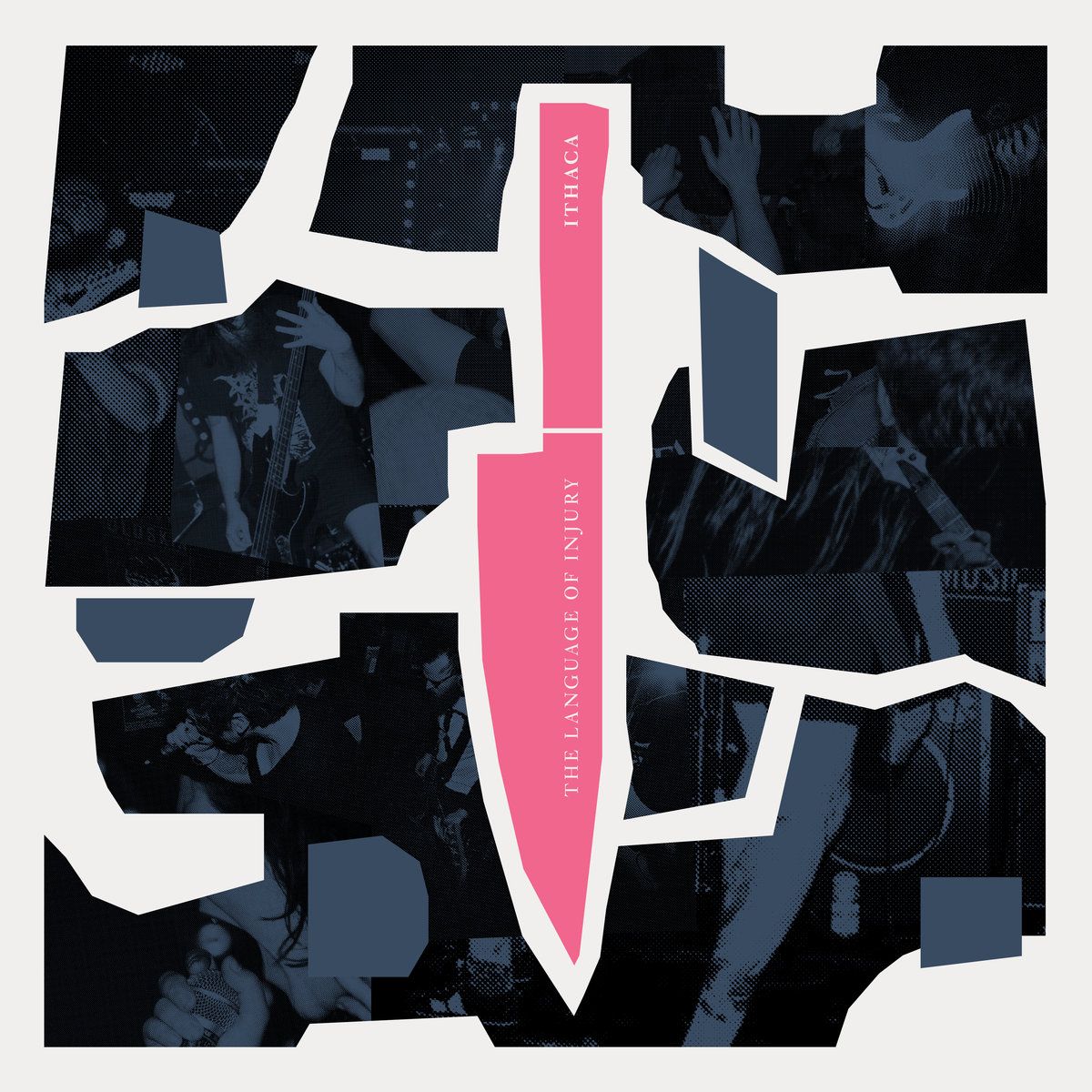
An album that could have comfortably sat in the top twenty-five of a Heavy Blog year-end list in 2003/4, Ithaca‘s The Language of Injury stands out in a crowd of 2019 metalcore releases. SeeYouSpaceCowboy, Sanction, and Vatican all released very pleasant records too, ensuring the genre would have maybe its finest hour back in the limelight. Ithaca belong on that very same list of names, but the London band pull from an ever so slightly softer British alternative sound and that is what makes this record tick over. For me, at least. Others will name this their album of the year simply due to the fact that it hits harder than a bus full of Tory bricks (pricks?) driving into an NHS hospital.
The panic-chord nostalgia isn’t the only thing keeping people around though. The fresh and fierce-faced young band structure tracks impeccably and can still pull a Shyamalan twist or two within the context of aggressive metallic hardcore. Like the heaviest Thrice that never existed before, “Slow Negative Order” is one of the few songs I played so many times on Spotify that I accidentally overtook my girlfriend’s own year-end summary. One of the more stripped-back ditties, it has these constantly rising and falling layers of clean vocal tracks that are perfect; it triggers the same warm feeling as a chorus on my other entry in this years list. It shouldn’t be difficult to convince everyone to check this record out, but somehow not everyone is listening to it yet. Help change this.
Read More: Review
–Matt MacLennan
22. Glassing – Spotted Horse

Glassing set the bar unnecessarily high for themselves in 2017 with the release of their debut LP, Light and Glass. Their dynamic and innovative take on blackened hardcore meets post-metal is among the most emotionally devastating and originally crafted music that you’ll hear of this style. With expectations set high for their follow-up, Spotted Horse, Glassing haven’t wavered from the formula that set them apart. Instead, they’ve elevated each element at its core for a more carefully crafted and emotionally powerful yet tempered full-length. From dissonant mathcore to sludgy blackened hardcore to soaring post-black metal, this album is certainly on brand for Heavy Blog and evidently appeals to those of us fervently following what’s at the cutting edge of today’s heavy music.
Every ounce of this album is purposeful; whether it establishes the setting, delivers the death blow, or dwells on those actions afterward, it does so with meaning. Glassing excel at churning violent riffs out amidst an atmosphere of sunken longing. Spotted Horse emulates one of the things that has made the last two releases from Rolo Tomassi stick out favourably among their peers: the ability to allow for introspection and rumination, enhancing the weight of the bleakness and devastation of those discordant knife-wielding breakdowns. You become invested in the emotional desperation of the vocals, adding to the payoff of the well-structured post-rock style build ups which serve as more than just well-painted textural backdrops. If you’ve ever longed for a child of Caspian, Oathbreaker, and Converge, Spotted Horse has you covered.
Read More: Review | Post Rock Post
–Trent Bos
21. Voyager – Colours in the Sun
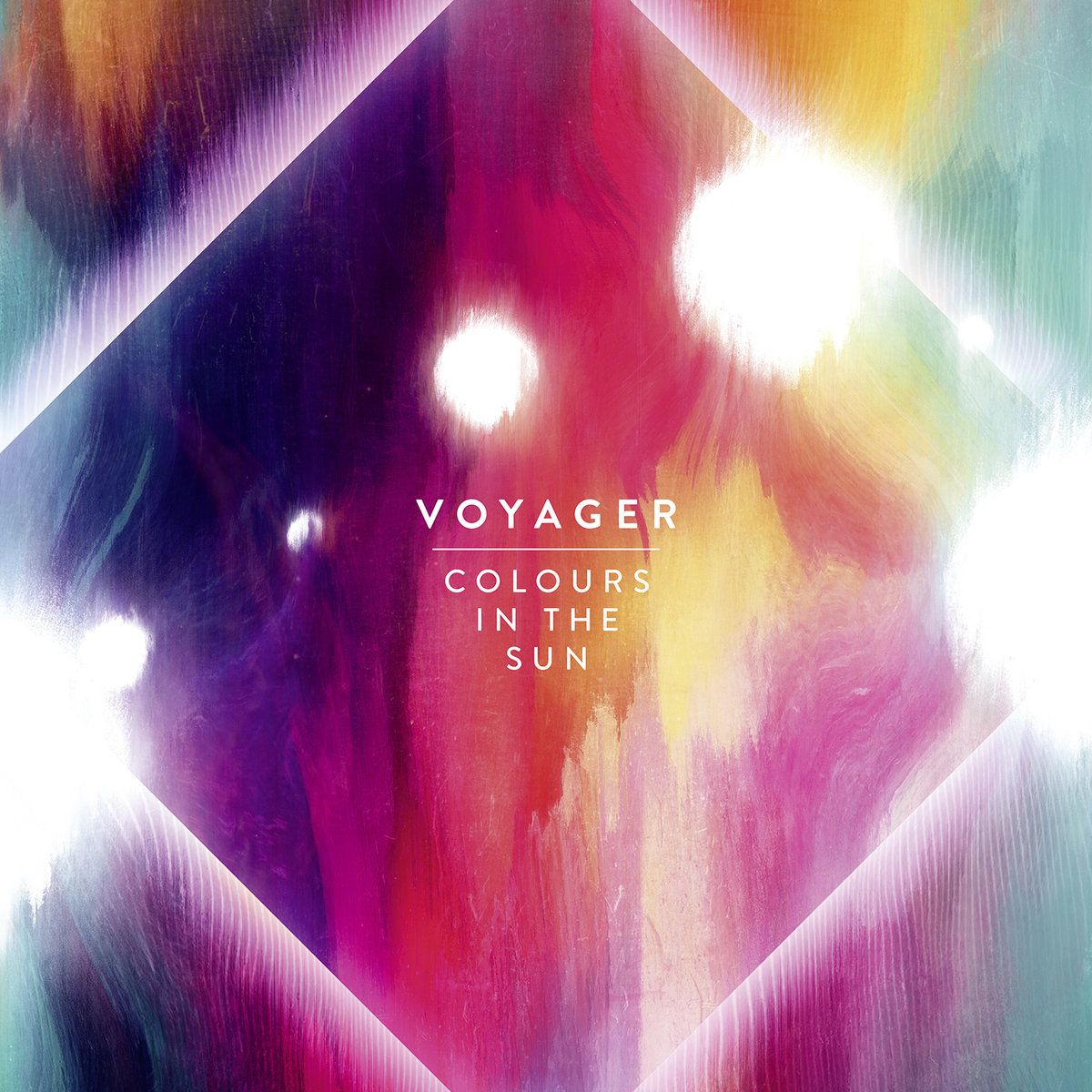
Many of us are drawn to heavy music for, well, its heaviness (Vitriol), its darkness (Ithaca), its aggression (Venom Prison) or its cathartic expression (Glassing). We crave the breakdowns, the beatdowns, the dueling guitar showdowns; the blast beats and double kicks; our own tortured screams played back to us, our emotions pillaged as lyrics are ripped straight from our own hearts and laid bare for all. But sometimes, just sometimes, all we want is to have fun. And no record from 2019 scratches that itch quite like Australia’s Voyager.
Chromatic guitar leads and vibrant, luscious synths wrap the record in a beautifully warm afterglow amid swaggering disco beats and saccharine, nostalgia-drenched ’80s vocals with huge hooks and bright melodies. Each track has a melody you’ll be singing or humming along to for days. But make no mistake, the bass and rhythm guitars bring thicc tones and neck-snapping moments aplenty. Whether it’s the swagger of “Colours,” the fuzzy warmth of “Brightstar,” Einar Solberg’s (Leprous) guest spot on “Entropy,” or the stomping grooves of “Reconnected,” Colours in the Sun is simply littered with a feel-good factor that you’ll want to revisit time and again.
Those lucky enough to have seen Voyager in the flesh will know that they’ve dominated the live stage for quite some time with their dedication to their craft, their humour, and the best damn medleys in the game. Colours in the Sun sees them put that energy, excitement and fun to tape in the most polished and engaging record they’ve released to date. So let your hair down, allow your worries to melt away, and embrace the kaleidoscope of colours Voyager have prepared for you. It’s well worth it.
Read More: Review | Editors’ Picks
–Karlo Doroc
20. Devin Townsend – Empath

Empath is Devin Townsend’s magnum opus. It combines elements from his entire career, leaving no sonic stone unturned. Shimmering ambience, bombastic showmanship, and complex layering all work in equal measure to bring forth Devin’s most inspired album in quite some time. Empath is the sound of an artist that is finally given everything they need in order to properly translate what they’re hearing in their head. It is a work of true, unfettered creative brilliance.
The first single released, “Genesis,” gives you the best idea of the album as a whole. It is grandiose, ever-changing, and awe-inspiring. One moment you’re hearing lumbering circus music and the next you’re blessed with the sound of waves pushing onto the shore of a white sand beach while cats meow softly. The album feels like a more organized version of Deconstruction in a way. That’s not to say that it sounds like that album at all times, but rather that it carries itself confidently and knows exactly what it wants and needs to be in order to prove its point, even if that means that it may not be for every listener.
Don’t let that scare you, though; there’s music on the album for every Devy fan. “Spirits Will Collide” is very reminiscent of the last few Devin Townsend Project records. “Sprite” is like a more vocal version of Ghost came to visit Devin during recording. There are even new sounds for fans to appreciate, like the theatrical broadway number “Why?” or the insane 23-minute closing track “Singularity.” If you’re a progressive metal fan, you owe it to yourself to check out Empath. It paints an intricately detailed and intensely vibrant portrait of one of the genre’s hardest-working and most prolific artists.
Read More: Review
–Ryan Castrati
19. Warforged – I: Voice
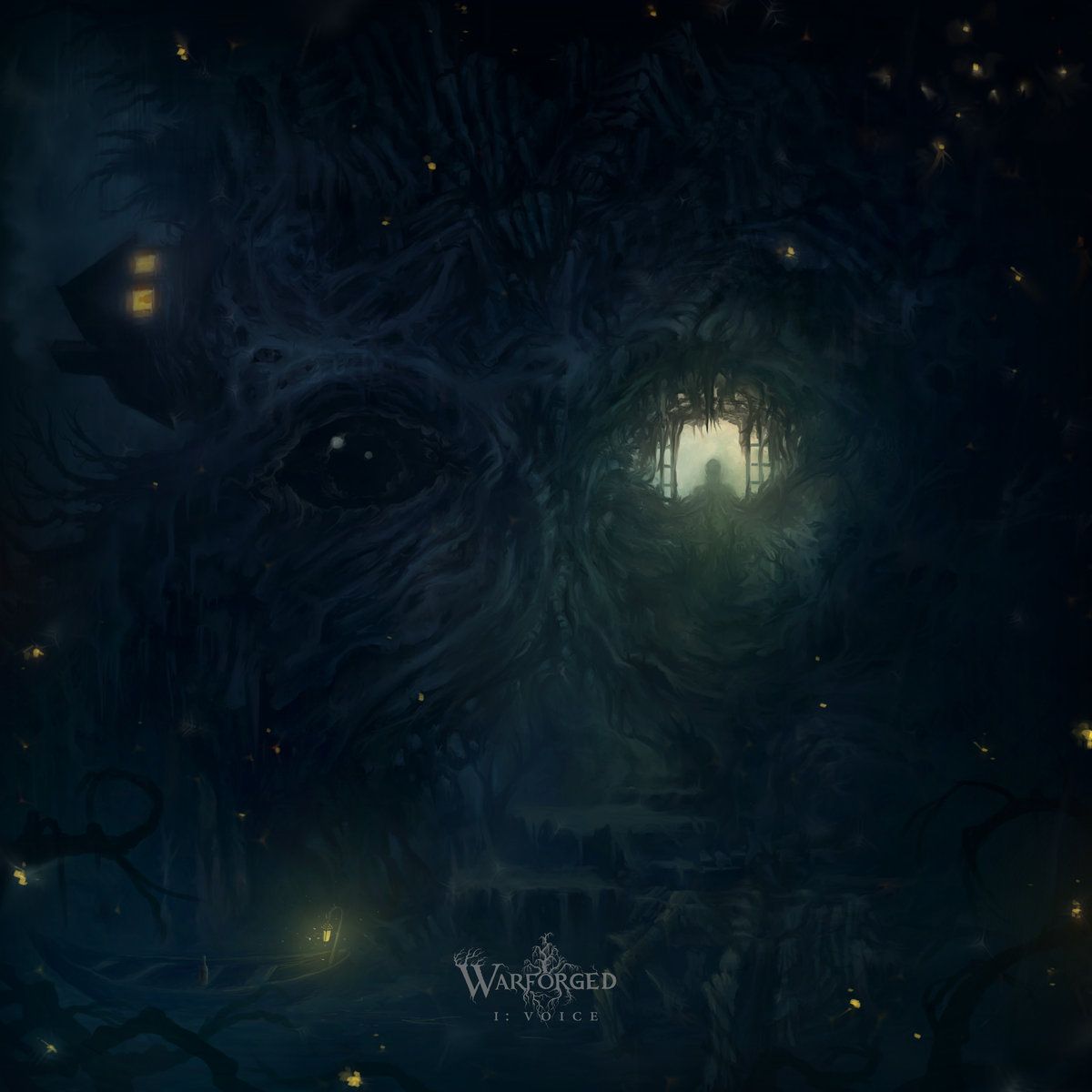
It’s easy to describe Warforged’s style of progressive death metal as something along the lines of “2000s-Opeth-meets-modern-tech-death,” but doing so almost does the band’s vision and capabilities a disservice. The band’s sound on I: Voice (their debut album, no less) is distinctly their own, offering up a fresh take on prog death that is simultaneously stunning and harrowing.
The album opens with back-to-back barn burners in “We’ve Been Here Before” and “Beneath the Forest Floor,” both songs laden to the brim with thick, suffocating riffage and eerie atmospheric overdubs. But it’s the remainder of the album that truly shows the breadth of Warforged’s palette, and more importantly, how willing the band is to draw from all parts of it. “Cellar,” which may just be my favourite song of the year, runs the gamut from claustrophobic guitar work to a stunning folk acoustic section leading into more melodic territory.
Those are just the first three songs. One could write a full-on treatise on the musical ground covered by each (our own review mostly just focused on three tracks) because that is just how densely packed with incredible and inventive material the album is. The main takeaway, however, is that Warforged have established themselves as having a clear, well-thought-out vision for the kind of art they want to create. I mean, what other metal band makes a fucking album-length music video for their debut? Expect even greater things from Warforged in the years to come; the name I: Voice naturally implies a sequel, after all. But in the meantime, be sure to spin the daylights out of one of the best debuts to grace the metal community in a long time.
Read More: Review | Editors’ Picks | Death’s Door
–Ahmed Hasan
18. Abigail Williams – Walk Beyond the Dark
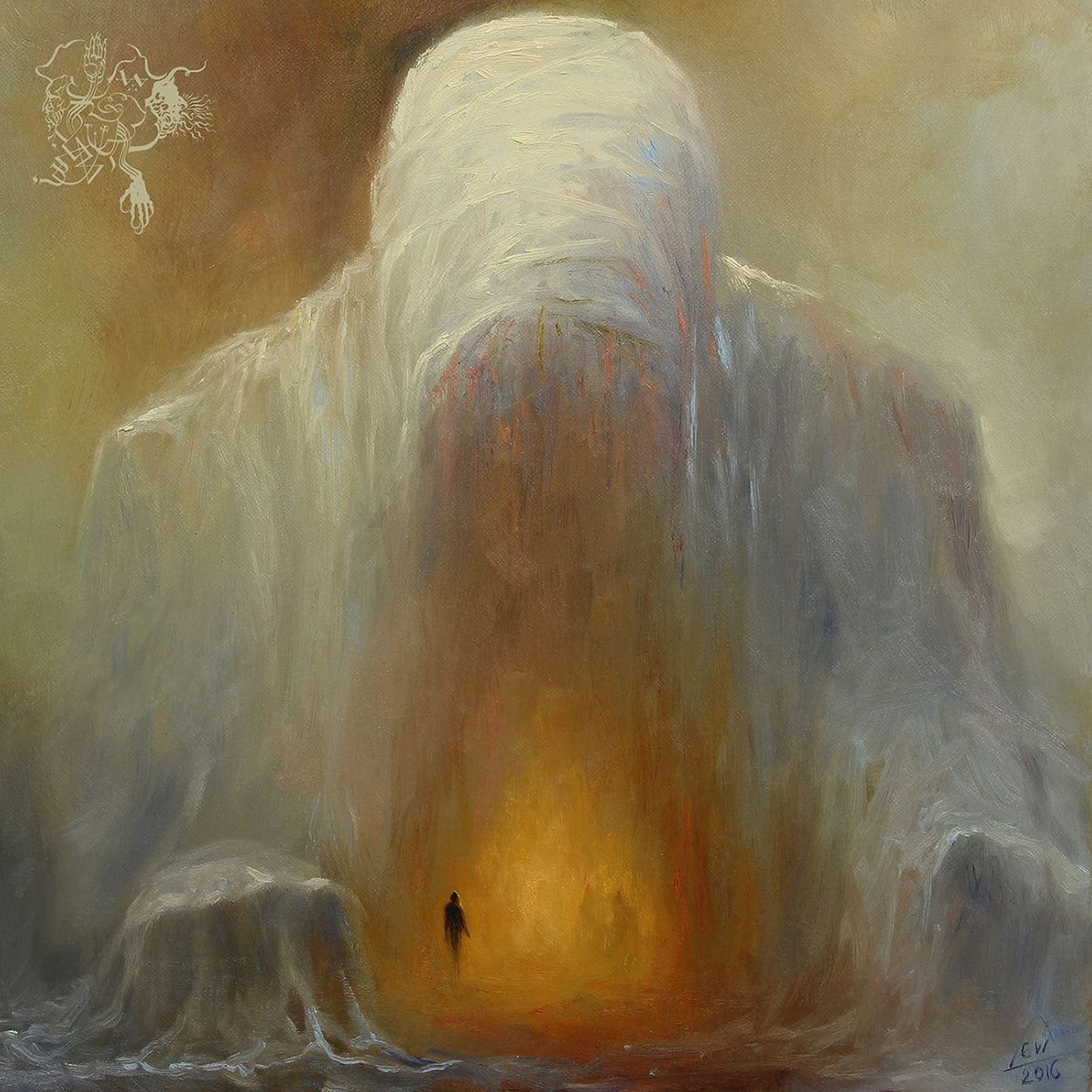
I’m not going to pretend like I’m an authority on black metal. I definitely dig the idea of it, and there are some bands that I love like Deafheaven and Trna that use some of the genre’s sonic ideologies to explore wider palettes. That being said, black metal tends to be a genre that I enjoy well enough but for some reason don’t return to consistently. But there’s something different about this album. I think that sometimes what keeps this genre at arm’s length for me is its tendency toward nihilism and bleakness, but Abigail Williams manages to write dark music that has glimpses of light around the edges and engages emotionally with the listener. There are melodies underlying the cacophony that reveal a vibrantly beating heart at the center of the record rather than a cold, black, dead one. Even the stunning album art seems to suggest this to some extent, with a looming, ghastly spectral form luring shadowy figures to enter the unknown within, but with a glow at its center that suggests an undefined warmth, but a warmth all the same.
Check out that transition at the 1:30 mark of “Ever So Bold;” that affirming feeling of triumph is one example of what sets Walk Beyond the Dark apart for me. That’s the kind of passage I want to return to again and again. The production is also great, highlighting all of the powerful moments throughout the record perfectly. Add in some lush (but not overwrought) string arrangements, well-placed melodic and atmospheric elements, a metric ton of awesome riffs, and a closing track that is undoubtedly one of the year’s finest songs, and you have yourself one of the most consistently rewarding releases of 2019, regardless of genre. This is exactly the kind of album that could keep someone like me coming back to black metal with more frequency, which makes a strong case for its importance and its inclusion on this list.
Read More: Review | Editors’ Picks | Kvlt Kolvmn
–David Zeidler
17. Baroness – Gold & Grey

The Savannah-Philly stalwarts have long existed as a constantly evolving fever dream driven by the rich tapestries that John Baizley creates in the periods between the band birthing new albums. Gold & Grey might best be described as the band’s foray into spacier frontiers while retaining the unmistakable Baroness identity. From the opening track “Front Toward Enemy” to the closing strains of “Pale Sun,” listeners were presented a gift made up of ephemera and tchotchke upcycled into this behemoth that feels as much like a film score as a heavy metal/hard rock album.
There is something operatic and kaleidoscopic with Grey & Gold. It shows a band continuing to evolve, and it’s not hard to consider the band’s setting as part of the personality. The sludgy beginnings of the band dovetailed nicely with their coastal Georgia upbringing; all humidity, sweat, and Spanish moss. In recent years, the band’s spiritual home is Philly, and if there were ever an audible representation of the Magic Gardens there, it would be this album. It overwhelms the senses and occasionally plunges us into brief moments of serenity.
The twists and turns of tracks like “Tourniquet” and “Throw Me An Anchor” give way to the solemnity of a space-fuzzed plea to “feel alive again” on “I’d Do Anything.” My own favorite moment on the album is the stunningly simple and bell-laden second half of “Emmett – Radiating Light.” The key point here is that for the band and their fans, nothing seems outside the realm of possibility.
–Bill Fetty
16. Fit For An Autopsy – The Sea of Tragic Beasts
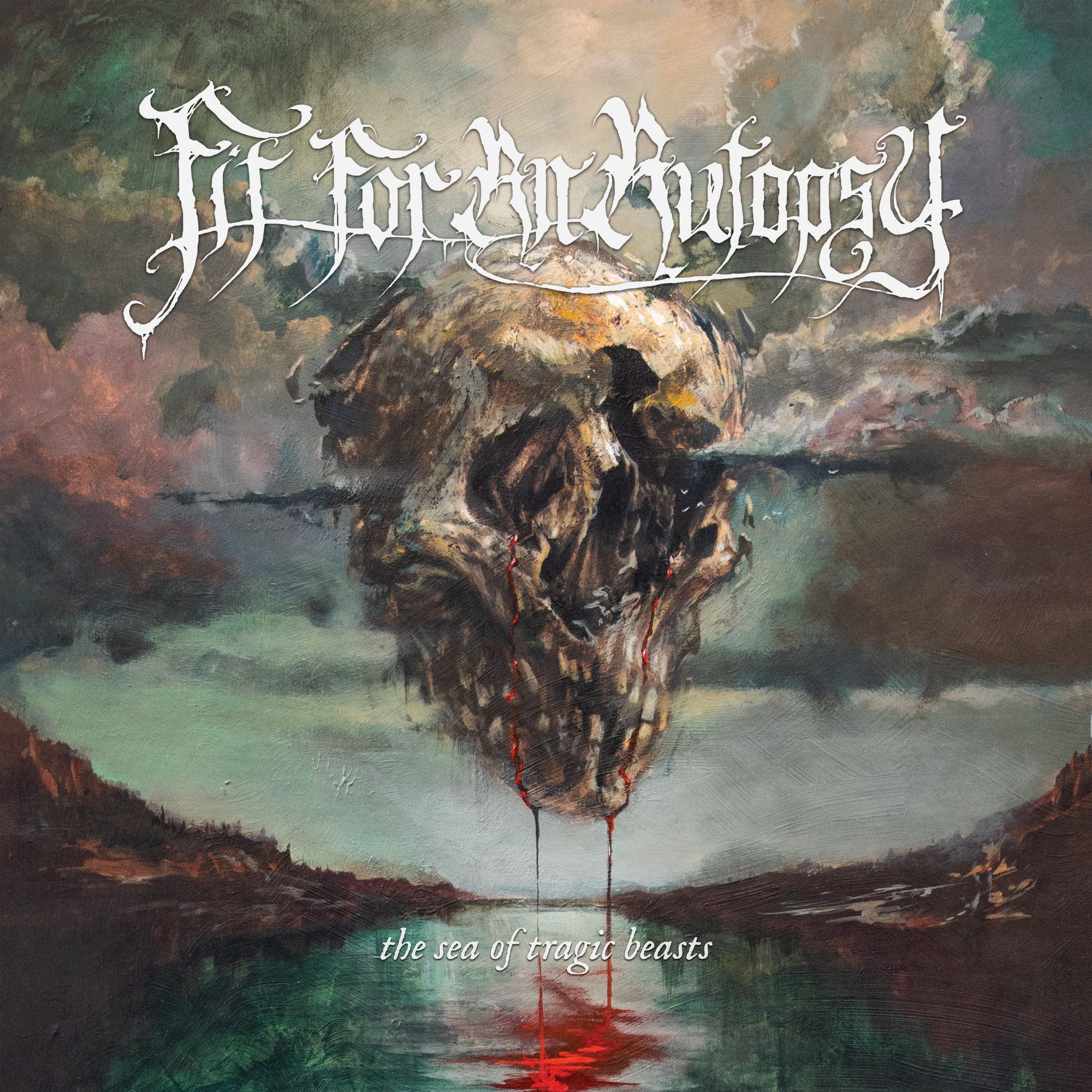
I can very honestly say I never thought I would sing the praises of a deathcore record or band in 2019. That all changed with Fit for an Autopsy and The Sea of Tragic Beasts. This year, I changed my mind about metalcore, so why not bring on another “-core” based genre? Deathcore sometimes gets a bad rap, but it’s records like The Sea of Tragic Beasts that can change that all around. It breaks the stereotypes of tribal tattoo meatheads talking about murdering the world. The record examines the self very deeply and has a lot of thoughts to express about personal tragedy and societal isolation. While it is one of the few deathcore records I’ve ever listened to completely, I feel very confident in saying that it might be one of the deeper and emotionally heavy records the genre has to offer.
There are a lot of metaphors on this record, and all of them are particularly apt in 2019. Vocalist Joe Badolato shouts and growls about the irresponsible and cavalier nature of leaders which frequently results in the tragedy of “the lesser” (for lack of a better term). It’s hard to put my finger on exactly, but there’s something about the presentation of these ideas through both the lyrics and music that makes the feelings so visceral. Perhaps it’s the nature of the djent-style guitar playing that just gives you the feeling of rats leaving the sinking ship similar to what is described in “Shepherd.” Even if neither of those ideas seem appealing to you in theory, I implore you to listen to The Sea of Tragic Beasts. I believe it is mandatory listening in 2019, and there’s no doubt you will all agree.
Read More: Review | Death’s Door | Editors’ Picks
–Pete Williams
15. We Lost the Sea – Triumph and Disaster
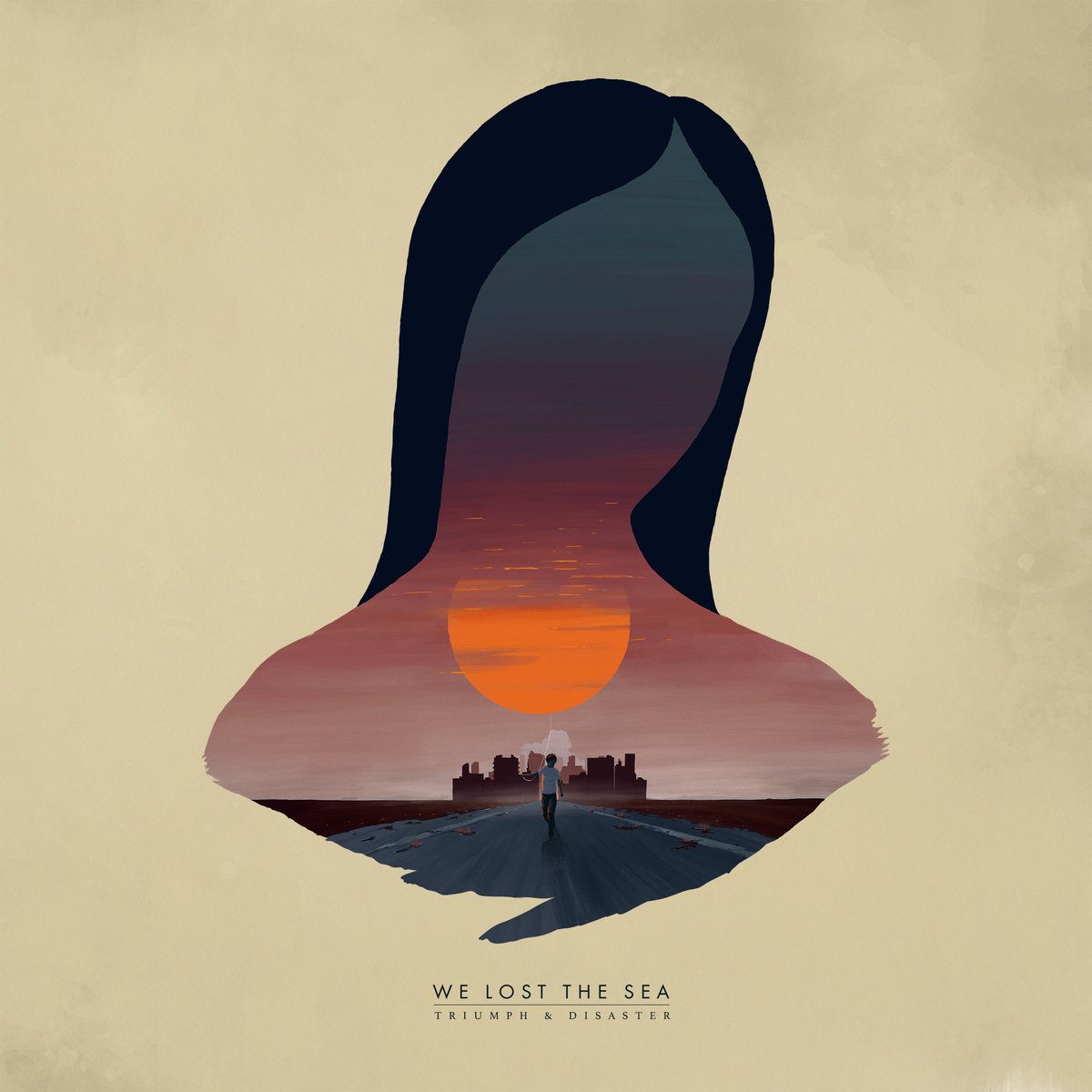
If any band has a claim to the phrase Triumph and Disaster, it is We Lost The Sea. Following the unspeakable tragedy that befell the band in 2013, they channeled their grief into 2015’s extraordinarily poignant (and thoroughly compelling) Departure Songs. Some four years later, they have returned, with another hour of bittersweet, predominantly instrumental post-rock. Like it’s predecessor, despite the absence of vocals from all but the final track, it is informed and guided by an over-arching concept. This concept is a rumination on climate change, and ultimately the collapse of the world as we know it.
Probably unsurprisingly, Triumph and Disaster is deeply infused with melancholy. Yet, it is not overwhelmingly maudlin, and contains moments that are almost defiantly uplifting and others which are achingly beautiful. The six-piece weave their respective lines together in a manner which is dense, but never overwhelmingly so. The album, as much as each individual track, effortlessly and naturally leads the listener through a series of dynamic highs and lows. The three 10-15 minute epics of Triumph and Disaster are juxtaposed with shorter interludes. “Dust” features an almost perfectly muted trumpet, and “Distant Shores” is given some Red Sparowes-style slide guitar.
“Mother’s Hymn,” the final track featuring vocals from Louise Nutting, leaves the listener with a question – Are we really too late? In the context of the album’s concept, finding the answer is probably even more urgent in their native Australia than in Europe or North America, but it’s obviously a really important question for everyone. Certainly, if we are going to give this question serious thought – and we must – then Triumph and Disaster is an especially powerful and sumptuous soundtrack to those contemplations.
Read More: Review | Post Rock Post | Editors’ Picks
–Simon Clark
14. Inter Arma – Sulphur English
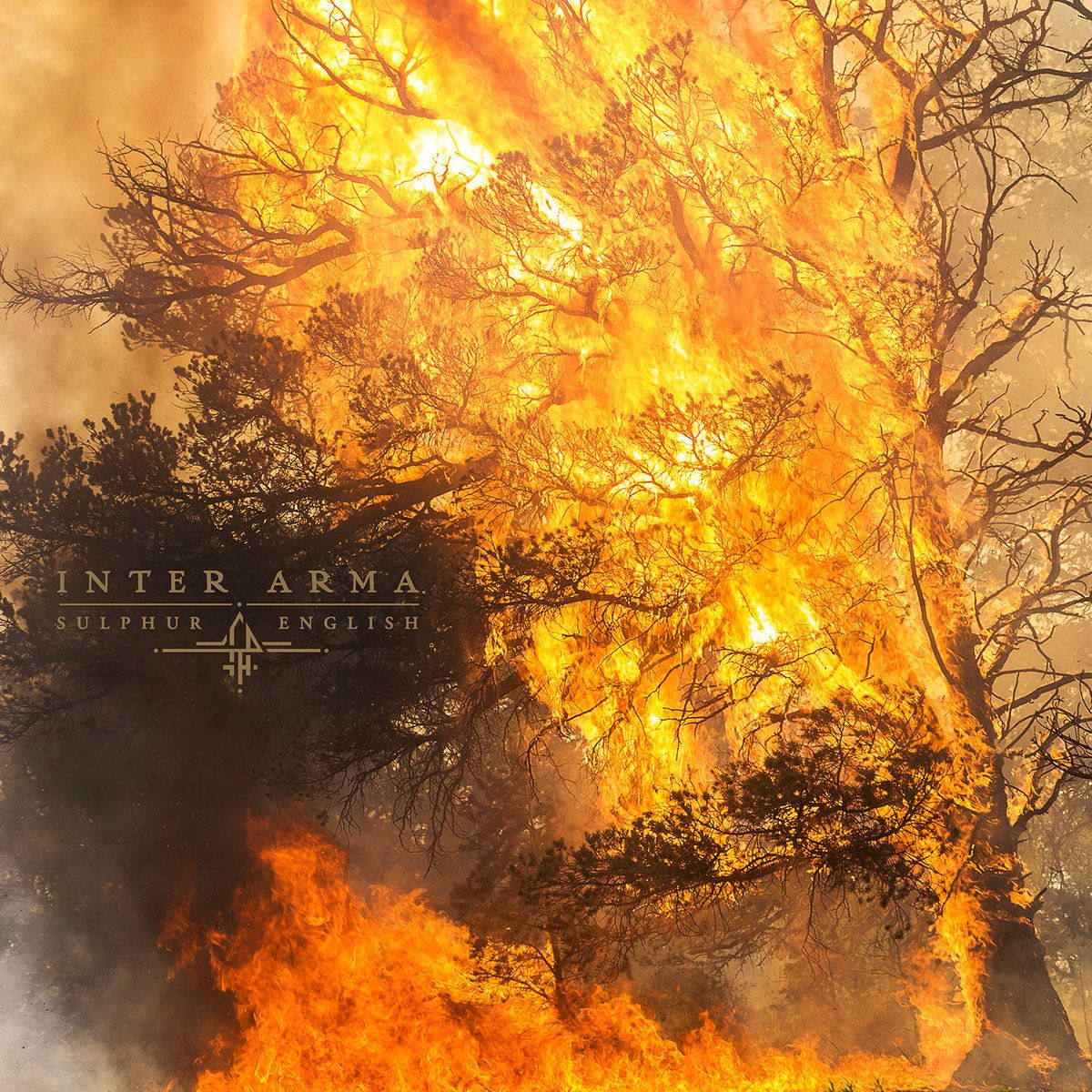
Inter Arma have become as dependable as anyone in extreme music. Still, with their virtually flawless track record, I’d be lying if I wasn’t hedging my expectations for Sulphur English. We’d be fortunate to only have Sky Burial or The Cavern, but an entire discography of this caliber? Damn, we’re lucky. Their agnostic blend of death and black metal, sludge, psych, and prog allows them to gain traction in so many different arenas that anything truly is possible. But this record seems to emphasize their death and doom elements, making Sulphur English their heaviest and darkest yet.
While Sulphur English largely picks up where the group left off on 2016’s Paradise Gallows, the contrasts of iridescent technicality and shadowy storytelling have been exchanged for a brutalist focus on patient, punishing rhythms, woozy riffing, and lyrical substance with greater proximity to the hardness of reality, even touching on politics. Stoking tracks like “Citadel,” “Howling Lands,” and “The Atavist’s Meridian” hit with an incredible weight and physicality as they burn on without fatigue.
And yet, Sulphur English is so much more than droves of devastation. “Stillness” and “Blood on the Lupines” peel back to reveal new layers of their obsidian folk and psych atmospheres. There’s an evenness to these parts that make them as vital as all of the heavy shit. There has always been an authenticity and honesty to Inter Arma’s approach, but these increasingly “human” facets have become inextinguishable, containing an emotional power that is uncommon not only in metal, but in music, period. This is just another notch on their (highly acclaimed) belt. We’re hella lucky.
–Jordan Jerabek
13. Cult of Luna – A Dawn to Fear
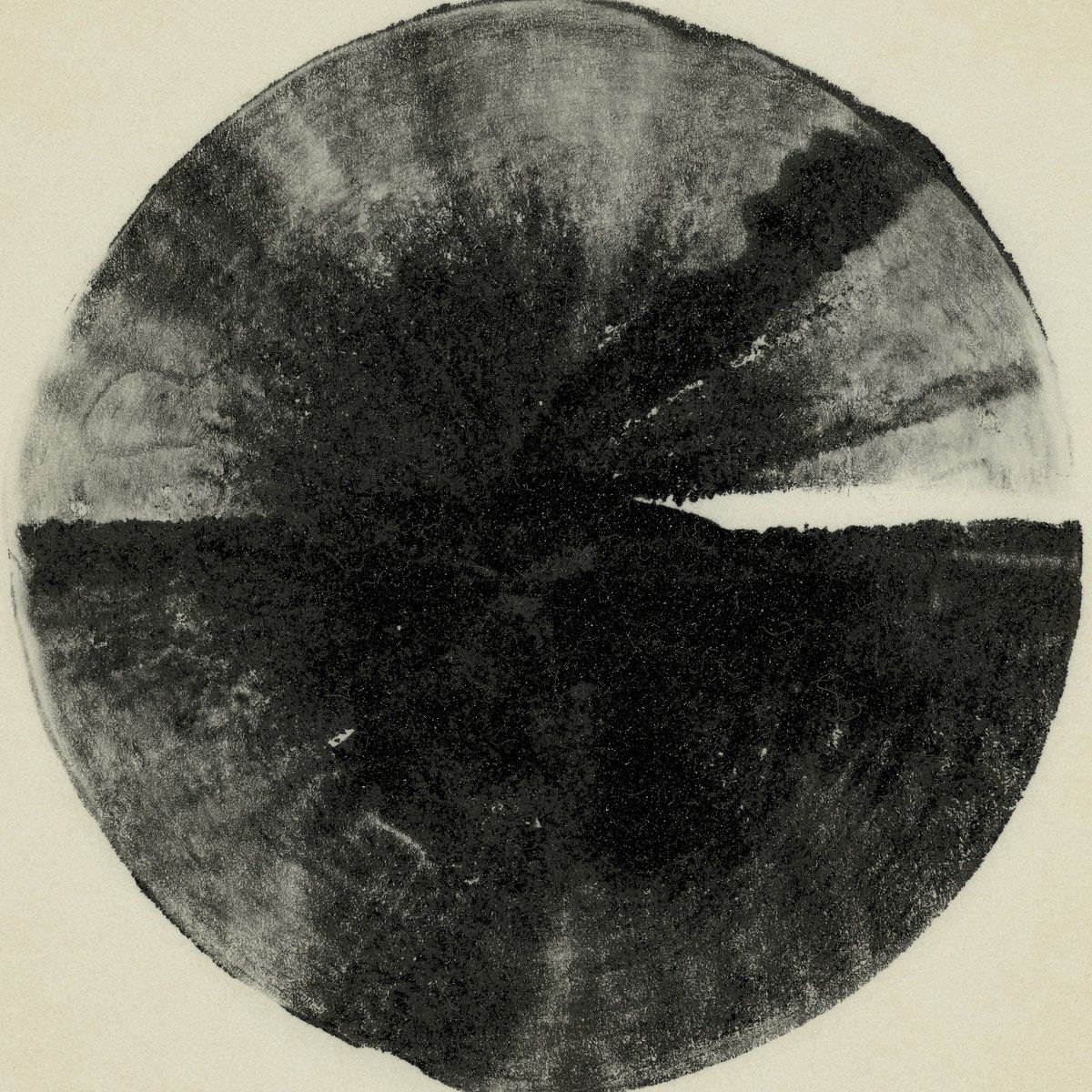
Cult of Luna have become the definitive post-metal band of the current era, and albums like A Dawn to Fear are the reason why. Blending the lush textures of Mariner with the stark austerity of Vertikal, the Swedish sextet’s seventh full-length outing is at-once one of their most accessible and accomplished offerings.
Although A Dawn to Fear is an undeniably bleak record centred around themes of futility and death, it’s also an irrefutably vital and life-affirming work. There is an ever-present emotional core to Cult of Luna’s work. Material that, in any other band’s hands, should feel bloated and oppressive, is utterly entrancing, rushing by in the blink of an eye. Whether it’s long, drawn-out meditations on inevitability, such as the title track or the fifteen-minute “Lights on the Hill,” or shorter, more immediate and melodic compositions such as “We Feel the End” and “Inland Rain,” A Dawn to Fear never ceases to be entirely engrossing.
Even within a catalogue as accomplished as Cult of Luna’s, A Dawn to Fear constitutes something special. The band already had four or five albums under their belt before this one that could be considered not only their own best work, but also arguably one of (if not the) best post-metal albums of the new millennium. However, A Dawn to Fear is more than simply another masterful effort to add to that list. It’s a consolidation of every area they previously excelled at into a single concise package that proves, when it comes to contemporary post-metal, Cult of Luna are in a league all their own.
Read More: Review | Editors’ Picks
–Joshua Bulleid
12. Car Bomb – Mordial
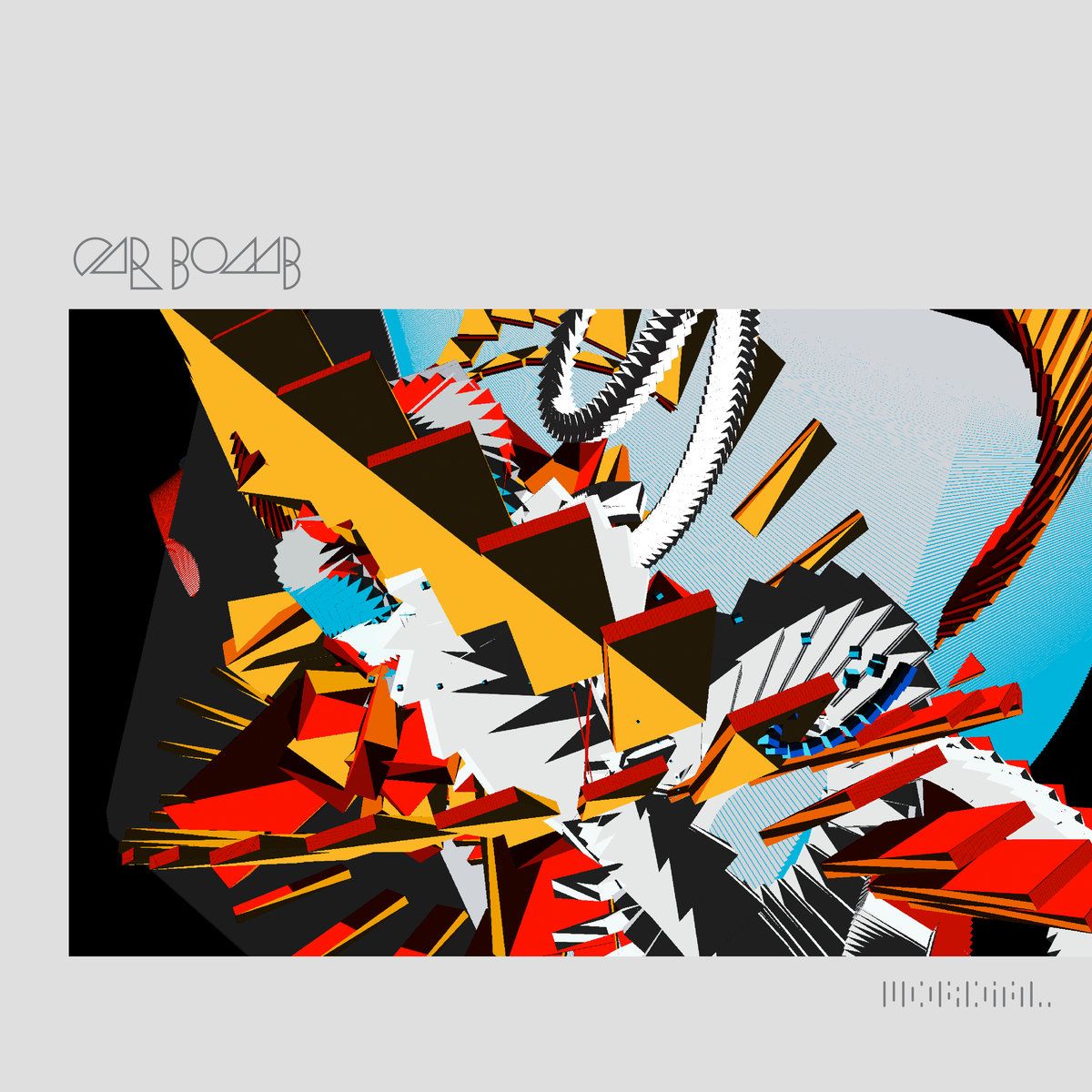
Frankly, you’d be more than excused if you thought that Meta (our much-adored album of the year in 2016) was going to be the last we would hear of enigmatic mathcore wizards Car Bomb for a very long time. Yet, here we are with the band’s fourth offering Mordial, announced in typical Car Bomb fashion with the surprise release of lead single “Dissect Yourself.” The track features a phenomenal intro-riff-fakeout before exploding into, among other things, bizarre laser sounds over blast beats. Mordial brings with it more of the oppressive, mind-melting grooves and textures that Meta left off with, bearing little concern for the impossible standards the latter record had set. This is simply Car Bomb doing what they do best: gleefully suplexing the listener through time and space with a barrage of off-kilter grooves and screeching riffs.
Yet, Mordial brings with it an added layer of unpredictability (even by Car Bomb standards) that makes it just that much better. Where Meta condensed the band’s melodic side solely into “Gratitude,” Mordial catches the listener off guard by introducing those moments throughout the album. Whether it’s the crushing slab of brutality that is “Xoxoy” erupting into a dreamlike melodic climax, or the chorus of “HeLa” centering around a clean vocal hook, even repeat listens don’t dull the thrill of being swung to-and-fro on Car Bomb’s wild ride. Couple that with an added emphasis on the band’s thrash influences (culminating in a mathcore-meets-Metallica tune literally titled “Blackened Battery”), and we’re left once again with one of the most creative and, somehow, fun mathcore records we’ve had in ages. In short: they’ve done it again.
Read More: Review | Editors’ Picks
–Ahmed Hasan
11. Latitudes – Part Island
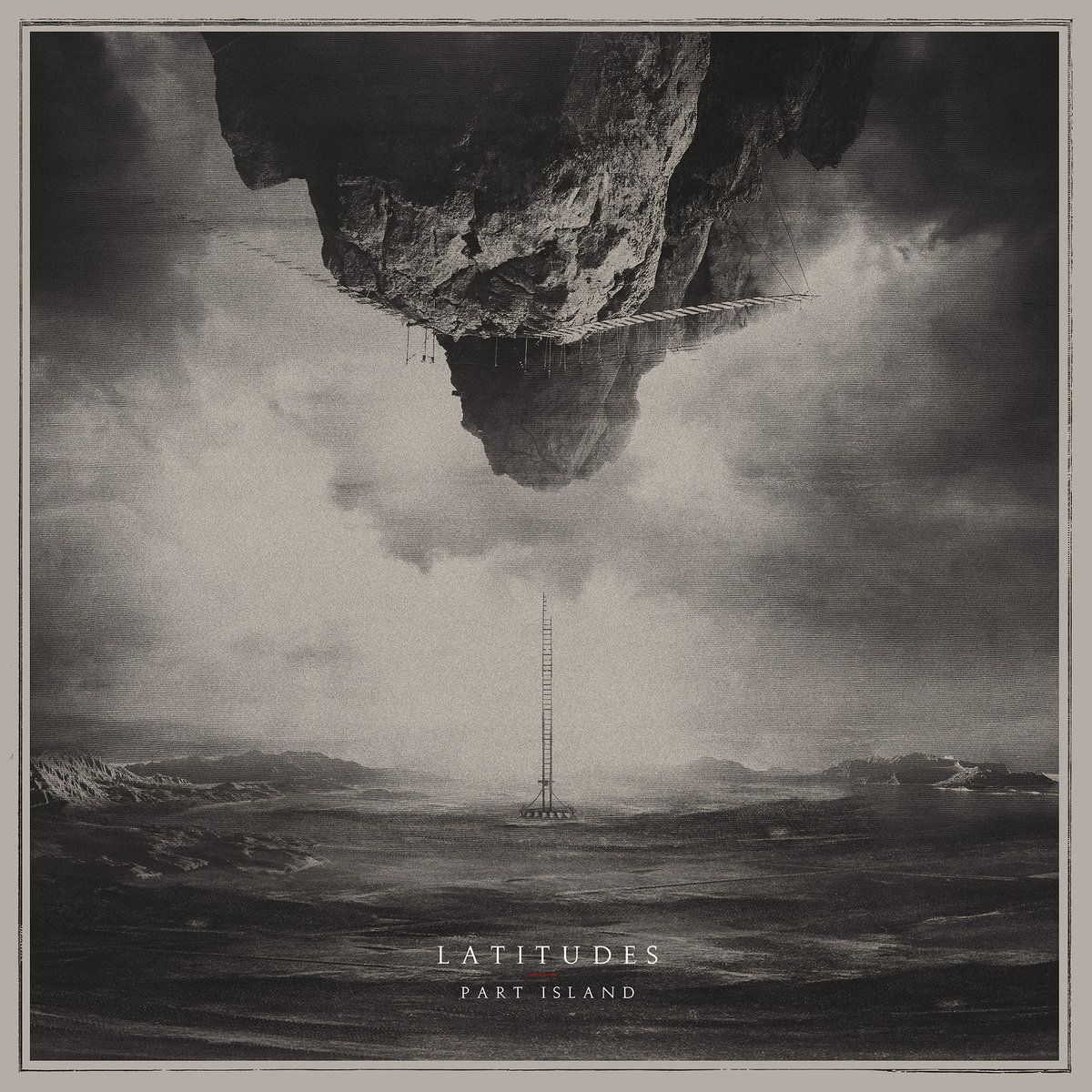
Too often is “contemplative” used to mean “distant” or “detached,” and that’s a damn shame. What is closer to us than our internal realm, our fragile castle of thoughts and perspectives? There’s no reason that contemplative, melancholic, or brooding albums need to be weak and thin. Latitudes‘s Part Island is a perfect example of this, putting to shame other albums from their genre and beyond that sacrifice impact for a “deep” kind of atmosphere. Of course, without the emotional punch and delivery that a band like Latitudes brings to the table, an album can’t really be “deep.” Part Island is deep, excavating with its vocals, lyrics, and instrumentation the listener’s inner spaces.
The secret to this is the excellent post-metal foundations which make the album work. Whether you find them in the guitar tones, the effortless emotional charge in the vocals, the crashing cymbals, or the undulating synths, Part Island is filled with hooks. Many of its genre-siblings fall into the trap of being “something to put on in the background,” their cavernous nature robbing them of immediacy. But Part Island, like Latitudes’ previous work, manages to be present as well as ethereal, subtle as well as direct. It’s one of the best post-metal albums released since Latitudes released their previous album, Old Sunlight. Come, let us dive into its dark waters and be lost for a while.
Read More: Review | Editors’ Picks | Post Rock Post
–Eden Kupermintz
10. Alcest – Spiritual Instict
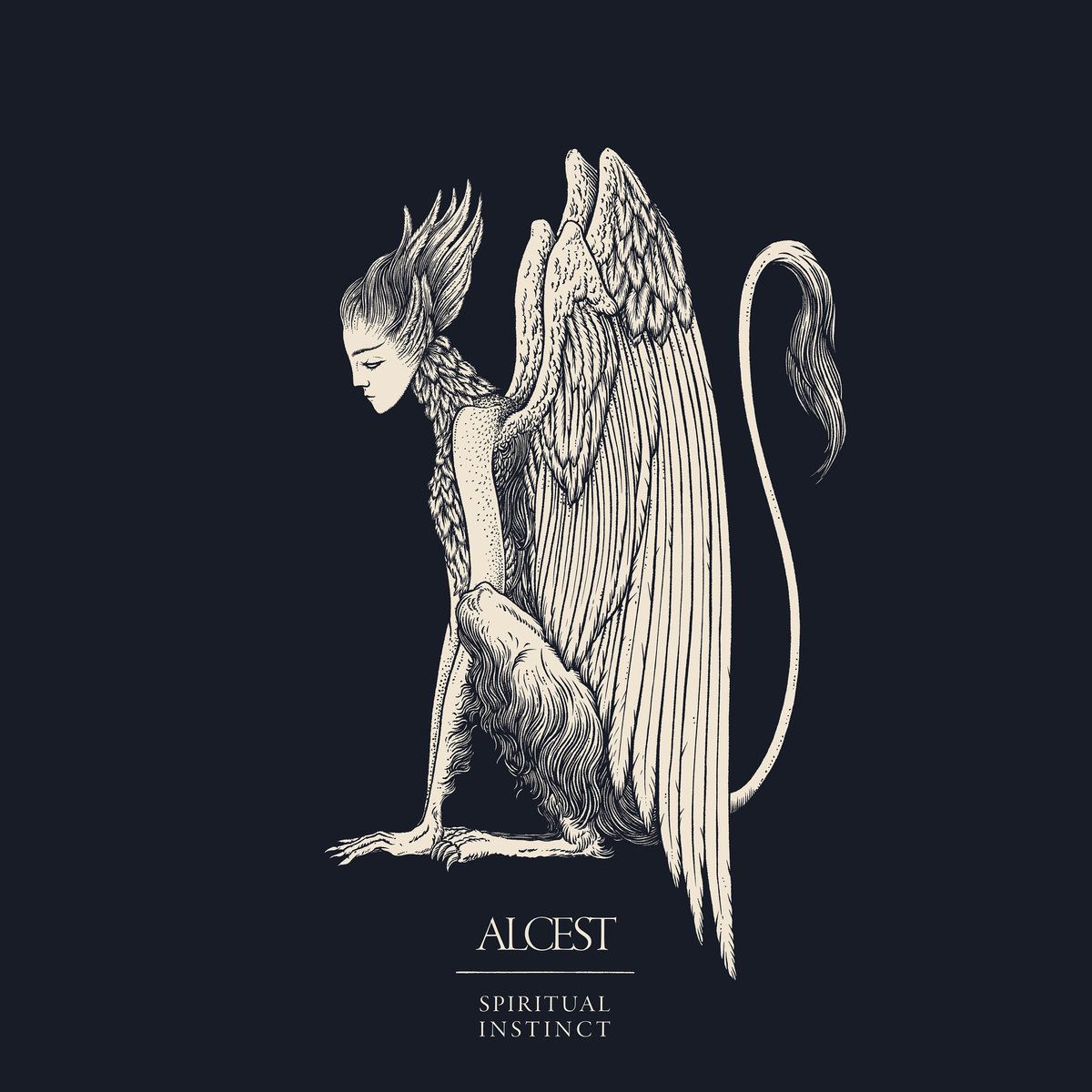
It’s been a few years since fans of the atmoblack were graced with new music from Alcest, and the intervening period between Kodama and Spiritual Instinct left a gaping hole of quality in the subgenre. That isn’t to say that good albums weren’t released in that span: Summoning, Blut Aus Nord, The Ruins of Beverast, and Mesarthim would certainly have something to say about that. But the last few Alcest-less years have only further solidified the band’s importance to the most beautiful corners of the black metal world, and their sixth full-length endeavor Spiritual Instinct couldn’t have arrived at a better time.
Compared to the rest of their discography, Spiritual Instinct contains just as much majestic melody and achingly beautiful songwriting as its predecessors. But the key ingredient that makes this record one of their best is its straightforward immediacy. Spiritual Instinct is indisputably the band’s most direct and focused release to date, which may sound like a net-negative for fans of their more intricate compositions. But the minor miracle presented by this record is its ability to maintain all of the wonder packaged in their more widescreen releases while shoring up some of the fat contained in their previous releases. These songs feel consistently purposeful and rarely meander, propelling themselves constantly forward toward thrilling conclusions. “Protection” and “Sapphire” are both brilliant examples of this new songwriting strategy, and result in some of the best music the band has written, well, ever. Throw in some absolutely delicious guitar tones and uniformly airtight performances and you have an absolute winner.
Read More: Review | Editors’ Picks | Kvlt Kolvmn
–Jonathan Adams
9. Dreadnought – Emergence
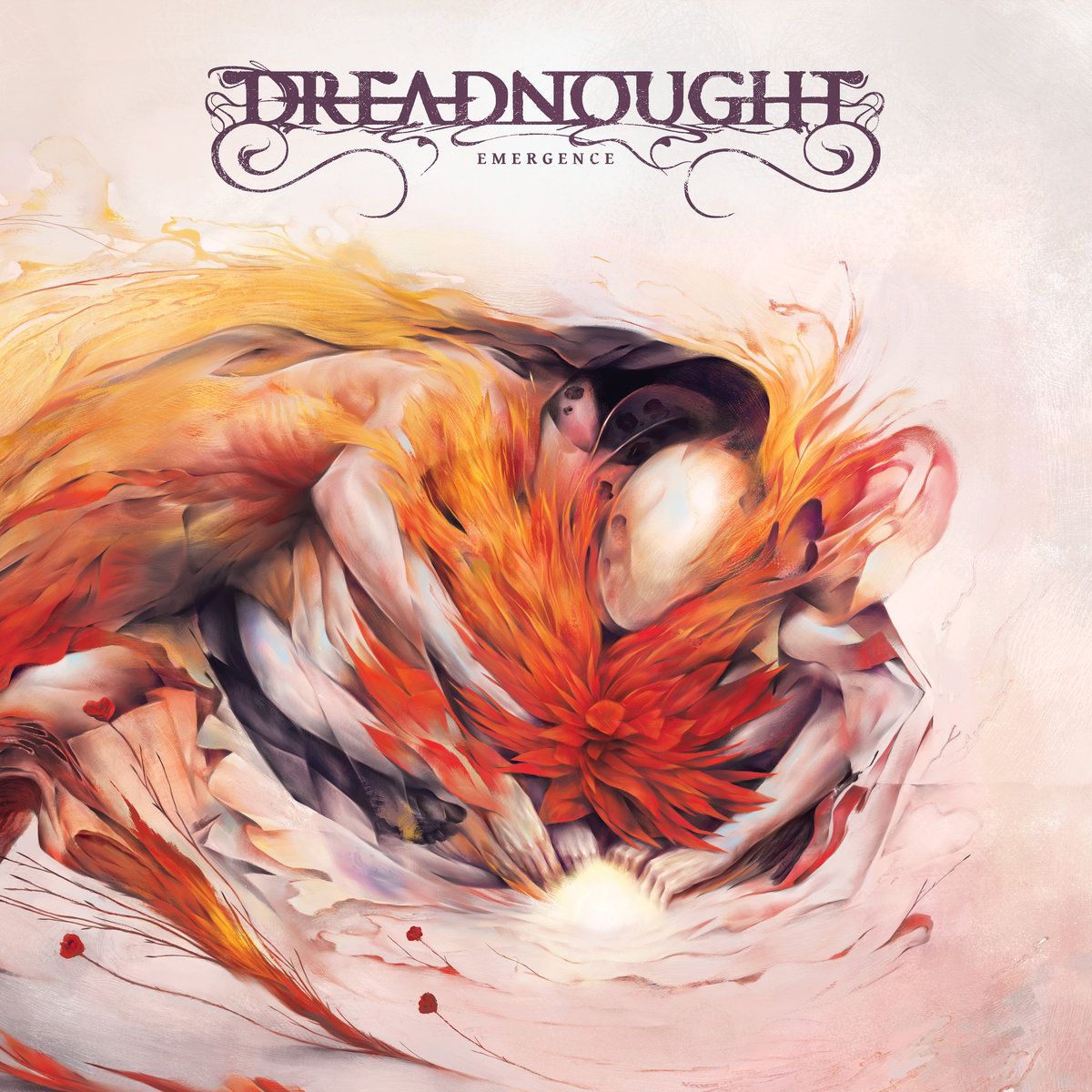
If you haven’t already, I strongly urge you to read Lauren Vieira’s guest post about her experience with synesthesia, which allows her to see sounds, hear colors, taste shapes, and experience different combinations of the senses. She explains how this condition impacts her approach to songwriting with Dreadnought, a name you’ve almost certainly seen if you’ve followed the blog over the last few years. The music the band creates is exceptional without any additional context. However, viewing the band’s progressive doom stylings through this unique, almost mystical lens enhances an already phenomenal sound.
On Emergence, the band continue the trend of expanding their sound into more dynamic, lush territory. Every time I listen to a Dreadnought album, the word that comes to mind is “textured”; there’s just so much detail and seemingly endless layers to pull back no matter how many times you’ve listened to each track. What’s most striking to me about this approach is how the band evenly balances every mood that they incorporate into their music. The songs are all comprised of crushing, heavy passages and triumphant melodic swells, a sonic relationship which always feels complimentary rather than dichotomous.
Emergence may not be the most conventional doom record of 2019, but it’s far and away the best offering from the genre I’ve heard all year. If you’re looking for a truly adventurous, progressive metal album, you won’t find many new doom releases as emotionally rich and rewarding as Dreadnought’s latest triumph.
Read More: Review | Editors’ Picks | Doomsday
–Scott Murphy
8. Bent Knee – You Know What They Mean
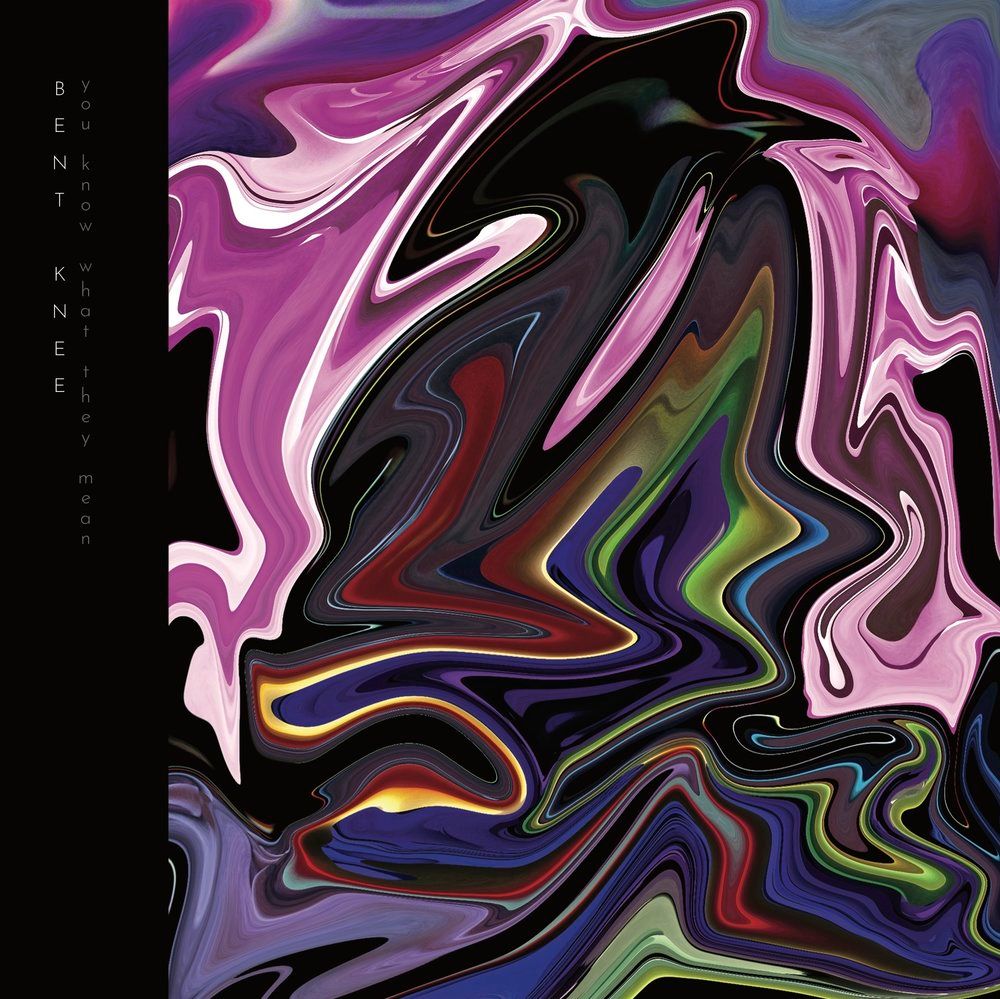
In many ways, Bent Knee are one of the great unifiers in rock today. Their fiercely eclectic and ever-evolving music brings together fans of hook-laden indie, weird prog, extreme metal, and well beyond. The juxtaposition of personalities and playing styles ranging from the completely off-the-wall energy of guitarist Ben Levin, bassist Jessica Kion, and drummer Gavin Wallace-Ailsworth, to the more contained and reserved presences of violinist Chris Baum and guitarist/sound wizard Vince Welch, to the emotional center of the band in the vocal powerhouse that is Courtney Swain, would be enough to tear most bands apart, or at the very least produce incomprehensible aural gobbledigook. Perhaps more than any other album they’ve produced though, You Know What They Mean is a demonstration of how that constant tension and search for new and unfamiliar sounds can yield incredible results that sound like no one else but can instantly be recognized as Bent Knee.
YKWTM largely rides on the success of simultaneously being the band’s danciest and groove-based album and also their most in-your-face aggressive. From the sledgehammer opening of “Bone Rage” through headbangers like “Egg Replacer,” angular dancefloor jams like “Hold Me In,” the wailing of “lovemenot,” and the defiant “Catch Light,” the band are making a statement that they’re done putting up with other people’s shit and the ways in which the music industry and world as a whole too often take advantage of those who don’t force others to create space for them. Bent Knee have long been a musical force to be reckoned with, and with YKWTM, they seem to be done with waiting for others to take notice.
Read More: Review | Editors’ Picks
–Nick Cusworth
7. Wilderun – Veil of Imagination

Whether you like the band’s post-Watershed output or not, it’s undeniable that Opeth no longer sound like the band many fell in love with. And while the genre has a lot more variety nowadays, there aren’t many bands out there still trying to keep that specific brand of progressive metal alive. It’s a weird blend of elements: haunting-yet-beautiful, achieving complexity through nuance instead of flashy instrumental work, layering acoustic and electric guitars together, mid-tempo riffing with big dissonant chords that transition into mellow bits.
Native Construct also play a fantastic brand of this dying style of prog death. If Opeth were the exemplar of restraint, Narive Construct were excess. Big synths, an operatic bent with a grandiose concept and an overwhelming atmosphere. If you jam those two seemingly-contradictory positions together, you get Wilderun’s Veil of Imagination. And it works fantastically.
Just like the blend of approaches it uses, the feelings evoked by Veil of Imagination are also dichotomous. It’s refreshing and nostalgic at the same time. All the best ideas the aforementioned artists utilize, Wilderun do so as well. But the contextualization is where the spice lives. Opeth are generally pretty dark and broody. To take the same techniques they employ and bolster them with empowering orchestral sections completely recolors them.
In fact, color is an appropriate metaphor to engage with this brilliant album. It’s like staring into a rainbow and experiencing all the colors simultaneously. It’s simply beautiful and awesome. Prog/tech metal can feel like a competition, which is why some bands give up on it and focus on making music that is more “emotiona.l” But Wilderun show that you can both win the competition and also be deeply emotionally engaging. In a genre where there is so much creativity and passion, Veil of Imagination stands tall as the best progressive metal album of the year.
Read More: Review | Editors’ Picks
–Noyan
6. The Number Twelve Looks Like You – Wild Gods
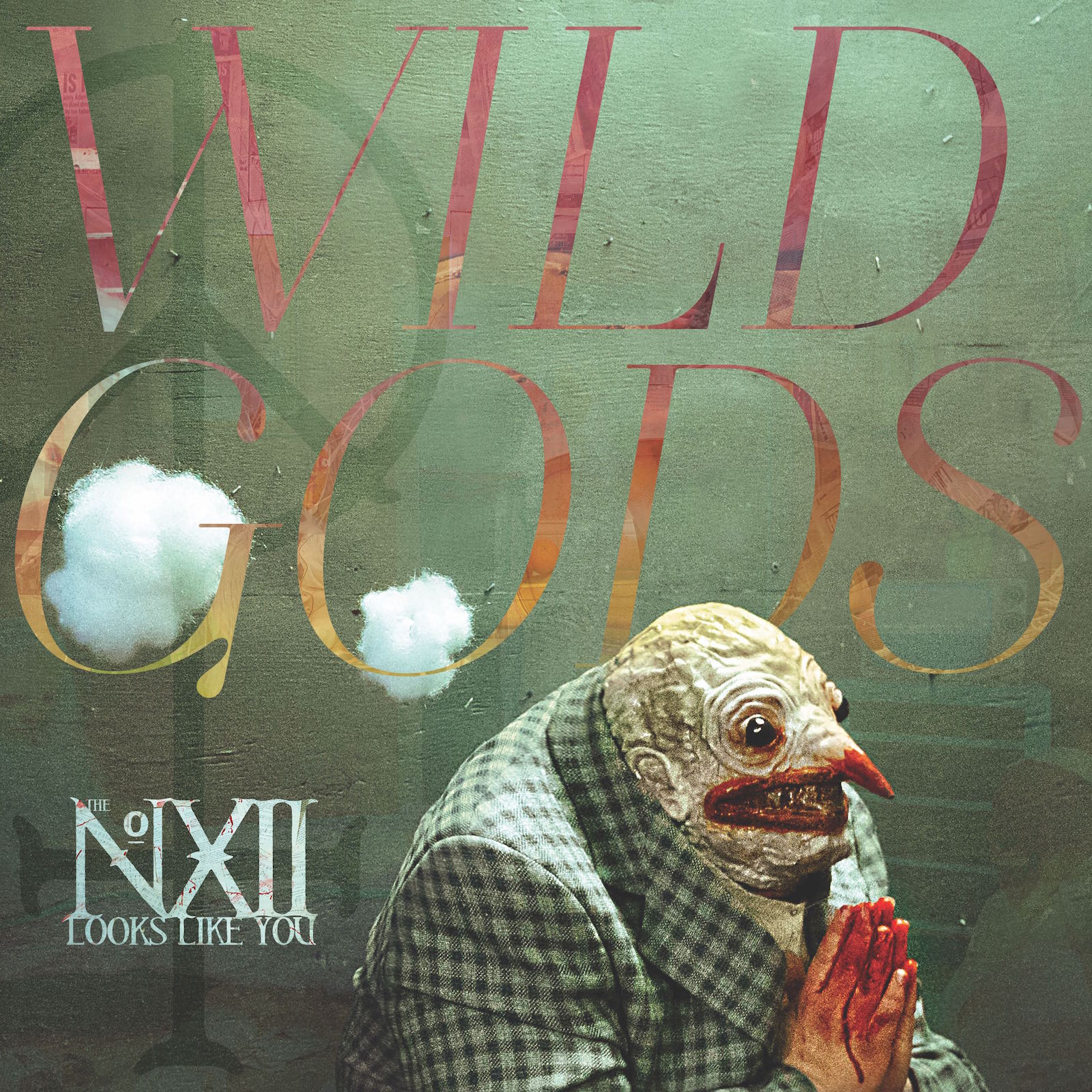
Imagine waiting all those years and getting that new Tool album? Sucks, right? Now imagine waiting just about the same length of time for new The Number Looks Like You and getting Wild Gods, an album that blew even the most furiously engorged XII fan into a basically sexual stratosphere. Doesn’t suck, does it?
Jokes aside (ok, one last Tool jab – it’s literally the same song every damn time), I couldn’t be happier to write up this entry into our big festive pile-up. Nothing has sparked more cheer in me than the chorus of “Ease My Siamese,” the most divine track that boggles the mind with what everyone’s doing behind the curtain, what’s actually going on that makes those gorgeous, meandering sounds.
As Car Bomb/Frontierer push the extremes of math metal in one direction, Wild Gods goes in the complete opposite direction. I love how heavy this record gets, but the twisting and shifting mayhem is so much more interesting with all of the other sounds, styles, and tools used. You’ll want to shake, rattle, and roar throughout the journey alongside the band as the pleasing playfulness of Destrage at their best gets left in the wake of this record. It’s a golden egg; a one in a million comeback record that is somehow exactly like we all wanted, and completely different at the same time. Magnificent as fuck.
Read More: Review | Editors’ Picks
–Matt MacLennan
5. Thank You Scientist – Terraformer

Back in 2015 was when I first came across Thank You Scientist. A relatively little-known progressive and jazz fusion band from New Jersey at the time, I recall my father’s ears pricking up at the sound of goofily presented yet immaculately performed jazz rock. “What’s this?” he asks, with an air of amusement in his tone. “They’re called ‘Thank You Scientist.’ It’s like jazz fusion meets prog rock,” I responded, thinking this a very original assemblage of genres. Well, 2015 Joe was wrong; it was a far cry from Mahavishnu Orchestra, a band commonly pegged under the same genre umbrella. This was something more propulsive and instantaneously uplifting than that, with a solid backbone of jazz-influenced rock songs, but also funk flurries, the occasional R&B-esque diversion, a pop-punk sensibility, and genuinely heavy shit. They were like a multi-layered chocolate mousse where each component is as sweet as the next but in an entirely different way so you don’t get sick of it. So, naturally, I wanted more.
More soon came with 2016’s Stranger Heads Prevail, a notable step-up for the band in regards to songwriting and progressively-minded album structure. I think it’s fair to say the record caught many people’s attention who had maybe previously let them slip under the radar. It appealed to progheads with its bookended structure and commitment to musicianship, to pop fans with its bouncy rhythms and melodic through lines, as well as metalheads with its tendency to go kinda hard at times (don’t believe me? Check out the second half of “Caverns”).
With the arrival of Terraformer in June this year, I was curious to see whether the band would take a sonic U-turn or stick to their guns. While Terraformer, I believe, fits squarely in the latter category, it presents a slightly different experience to the band’s previous work with sparser compositions and more room for those meandering jams we know and love from the band. Breakdowns? Builds? Ballads? It has those too. A Thank You Scientist album has never had such a successful attempt at forging an emotional zenith as “Anchor,” which begins at a tip-toe and ends on a victory lap, while the mid-section is so expertly paced given that the track comes in at almost 10 minutes in length. “Everyday Ghosts” is likely to go down as a career staple with a downright boot stomp of a chorus and an instrumental break that grooves like your shitfaced aunt at a family wedding. “Birdwatching” and “New Moon” provide interesting grounds for future progression with their rather understated, slightly cinematic aesthetics. It’s not a style I ever thought I would see the band work in to a record, but they pull it off well, enhancing the meatier jams that surround them.
Thank You Scientist have created their own furrow in the market in which to settle and fill with increasingly loopy aesthetics, sugary jams and their knack for the anthemic. In 2019, they have somehow managed to become ever more joyously technical, without becoming stultifyingly clinical, and I hope they can continue to do this well into the new decade.
Read More: Review | Editors’ Picks
-Joe Astill
4. Full of Hell – Weeping Choir

Back in May (wow! This year fucking zoomed by) I said of Weeping Choir, “All in all, when the cacophony recedes and the dust has settled…this feels like the record Full of Hell have been building up to for a decade now. Across Weeping Choir, we see a band that is not only more confident in their riff-writing ability than ever before, but a collective that has completely coalesced into a legendarily potent artistic force.” As 2019 has gone on, countless additional listens and many hours of digestion of this record have only served to strengthen and reinforce this opinion.
At the core of Weeping Choir’s shocking power and ability to keep its appeal up long after any sense of newness has died lies a truth to which few other grindcore bands, extreme metal bands – shit, bands in general can lay claim: Full of Hell do not sound for a single instant on this record like they are presenting anything less than a complete vision of their artistry made manifest. In just under 25 minutes, in 11 tracks, the East Coast harsh grinding death quartet cover a territory that seems to encompass the entirety of both their artistic abilities and their artistic desires, and within Weeping Choir is found the seething diamond that results from these two forces of intense energy meeting. Sharp, jagged grindcore riffs, white-hot bolts carrying an undercurrent of cosmic misery, break apart upon collision with towering walls of cacophonous, thundering death metal. There is a sort of pendulum-swing to the whole affair; unstoppable force and immovable object are collided time and again in explosive bouts of energy.
Full of Hell takes risks here, too, though, and it’s in these departures from the album’s deathgrind musculature that some of the most alluring and unforgettable moments happen. Centerpiece “Armory of Obsidian Glass” builds from a foundation in drone doom, amplifier-worshipping occultism in miniature made all the more real by some haunting vocals from Lingua Ignota, into a climactic Babel of triumphant black metal before tumbling down immediately in follower “Silmaril,” one of Full of Hell’s most unhinged and violent tracks to date. The pairing of “Rainbow Coil” and “Aria of Jeweled Tears” works similarly – lonely, hissing noise builds a tense and claustrophobic atmosphere, which is immediately rent asunder by a volcanic blast of grind – and “Angels Gather Here” condenses their best work with The Body into two minutes and 40 seconds of white-knuckled causticity.
To reiterate, Weeping Choir accomplishes what many set out to do, and few accomplish: provide a complete, uncompromising, and fully-formed artistic vision. It’s not only an impressive feat on its own, but coming from a band with a unique and powerful idea of just what extreme metal can be, it easily finds its place in the constellation of this year’s top releases. This is an album to be remembered.
Read More: Review | Editors’ Picks
–Simon Handmaker
3. Blood Incantation – Hidden History of the Human Race

If you haven’t heard of Blood Incantation before 2019, you certainly couldn’t escape them now. Their much-hyped debut album Starspawn was an instant classic in 2016 in death metal circles, but it was easy to miss if you weren’t paying attention. Their follow-up Hidden History of the Human Race, however, is death metal’s universally-praised golden child and the de-facto representative of the genre to the masses this year and is the best-of-the-best heralded by wider-focused mainstream outlets like Pitchfork and Stereogum, for all the right reasons.
At least for once the genre has a positive role model and a token album that is exemplary in its own right rather than the product of collective grotesque curiosity. Looking at the mean narrative across outlets, Hidden History of the Human Race is being presented as a testament to what the genre can be and what’s possible within the aesthetic boundaries of extreme music. It absolutely is, but we’ve all known of death metal’s broad scope for quite some time; the ’90’s were rife with psychedelia and ’70’s prog influences, from Death on through Atheist, Cynic, Opeth, Gorguts, and beyond. Currently, we’re in the midst of an OSDM revival of sorts that bore the likes of Tomb Mold, Horrendous, Artificial Brain, and others that are getting down and dirty with high-minded tech and forward-thinking brutality. It just took Blood Incantation with their 18-minute death metal odysseys for the broader musical audience to realize that, yes, psychedelia and death metal do, in fact, go hand-in-hand, and they have been for literally 30 years.
But don’t let the incredible hype surrounding Hidden History of the Human Race sour you on the experience. Despite the broad appeal, Blood Incantation has crafted an album that is actually that good, if not downright fucking incredible. In his review, our very own Jonathan Adams gave the elevator pitch, “Morbid Angel but Pink Floyd,” which is a fair-enough descriptor, if not undeniable in the 18-minute finale “Awakening From The Dream Of Existence…” which, to the shock and awe of just about anybody, never once threatens to collapse under its massive weight or wear out its welcome. Throughout the record, soaring guitar harmonies glide over angular riffs and fretless bass to craft some truly catchy death metal in its melody-slanted take on brutality. The band then take cues from Nile and Defeated Sanity on “The Giza Power Plant” with a midway detour inspired by world music which eventually gives way to one of the hardest-hitting riffs of the year. Then, the act drops out in the drug-induced instrumental “Inner Paths (To Outer Space),” taking death metal to a new astral plane, hypnotic and moving.
Across the record, Blood Incantation make the case time and time again that they are the most creative band in death metal right now, with their compelling songwriting and engaging riffing uncovering new possibilities within the realm of death metal. It’s truly a sound to behold. Even if you aren’t a heavy consumer of the murkier realms of death metal, Hidden History Of The Human Race is mandatory listening as one of the most important death metal records of not only 2019, but of the decade as well.
Read More: Review | Editors’ Picks | Death’s Door
–Jimmy Rowe
2. clipping. – There Existed An Addiction To Blood

Back in 2013 when clipping. dropped Midcity, they were an intriguing young rap group with potential that only a few of us on the blog were buzzing about. Six years later – and after multiple album reviews and *prognotes entries – they’ve dropped our second-favorite album of the year. Other than a consistent pattern with their album openers and evolving narrative with their “Story” tracks, the trio have continuously reinvented themselves in a relatively short period of time. The trio refined their noise-obsessed approach on Midcity to create a slightly more “traditional” hip-hop album with CLPPNG, eventually toying with themes of sci-fi (Splendor & Misery and The Deep) as well as BDSM and power electronics (Wriggle). Not only have clipping. reinvented and reinvigorated themselves once again on There Existed an Addiction to Blood, they’ve elevated every aspect of their sound in the process and created the strongest statement of their already accomplished discography.
As Eden outlined beautifully in his review, this album is a dark, physical album, one which feels far grittier than anything clipping. have released up to this point. I hesitate to use the “horrorcore” tag, since the subgenre is often more obsessed with shock value than genuine terror. This couldn’t be further from the case on There Existed an Addiction to Blood. From the haunting, subtly abrasive production to expertly crafted and rapped verses from Daveed Diggs, this is easily the most bleak, suffocating hip-hop record I’ve heard in some time. It feels like Diggs is narrating a concept album about a post-apocalypse world falling even further into chaos.
Yet, of all the interesting industrial-influenced ideas the group explores on the record, the most succinct encapsulation of the album is its outro, “Piano Burning.” After my first listen of the 18-minute field recording, I figured it would be a cool one-time experience that I’d skip on subsequent listens. Yet, each time I put the album on, I found myself engrossed in a finale that barely qualifies as a “song. “It could be because the preceding tracks had already commanded my attention so thoroughly, but I feel it hints towards a larger, symbolic message about what the track represents.
Clipping. are hardly pioneers of industrial or abstract hip-hop, and frankly, they’re not the most avant-garde rap artists out there. Yet, I can’t think of a group that better collides the worlds of experimentation and traditional hip-hop as well as clipping. have throughout their career, and especially on There Existed an Addiction to Blood. This brings us back to “Piano Burning,” a track that is quite literally a manifestation of what the trio have aimed to accomplish during their young careers. With hip-hop being such a structured, formulaic genre at its core, rappers and producers truly have to break the mold in order to establish a lasting legacy. In their pursuit of this goal, clipping. have consistently deconstructed hip-hop norms and rebuilt the genre in their image. And on There Existed an Addiction to Blood, they’ve burned their own foundation to the ground and created something awingly beautiful and terrifying in the process.
Read More: Review | Editors’ Picks
–Scott Murphy
1. White Ward – Love Exchange Failure

The promise fulfilled! The potential achieved! Is there a greater pleasure in life? In music, surely, it is one of the most enjoyable things to taste. This is not to say that White Ward’s previous efforts were bad; on the contrary, it is the very excellence of previous releases that planted the seed which bloomed into expectation and, finally, gloriously, into this year’s Love Exchange Failure. It turned out the missing piece of the formula was to dive deeper into the darkness, melancholy, and sheer urban depression that has always bubbled in the background of White Ward’s music.
Fully embracing and accentuating these darker elements, brought forth in moments like the very first few minutes of the album or the heart wrenching, mystifying middle passages of “Dead Heart Confession” or the unassuming, subtle, and emotional closing notes of “Uncanny Delusions” (not to mention the harrowing sample at its very end), all of these elements brought forth and album which feels fuller, deeper, and more internally complementary than ever before. These subtle tones made the black metal side of things flourish all that more aggressive and abrasive, setting the haggard vocals, the blistering riffs, the undulating blast-beats, in a kind of dark light. Like a figure half in shadow or a sound echoing in the stillness of the night, the more silken and caressing tones only serve to accentuate the heaviness of the rest of it.
The result is an album that grabs you by the throat and growls in your face like a wounded animal while at the same time inviting you to contemplate how alike, and lost, we all really are. In that sense, Love Exchange Failure is a true testament to the power of the current wave of black metal done well. It delivers on the promise of blackgaze, post-black, whatever you want to call it, to grab the genre, take from it everything that made it great, and drag it kicking and screaming into modernity with a new aesthetic, new themes, and new ideas to make it hit that much harder.
Thus, Love Exchange Failure is not just the blooming of White Ward’s potential into the fragile, sad, yet resplendent rose that is this album but a sign the fruition of post-black metal in general into more than just a fad, into a genre all on its own. This fruition has been happening for a while now, to be sure, but Love Exchange Failure is one of its strongest, most fully fleshed out harvests to date. If you haven’t yet, I truly suggest you bite into what is certainly 2019’s most expressive, emotionally fraught, and downright unarming album. And if you’ve already partaken of this particular fruit in the past, then here’s your chance for another visit, another excuse for a drop of the sweet, melancholy, addictive juice that tastes like nothing else released this year.
Read More: Review | Editors’ Picks | Kvlt Kolvmn
–Eden Kupermintz